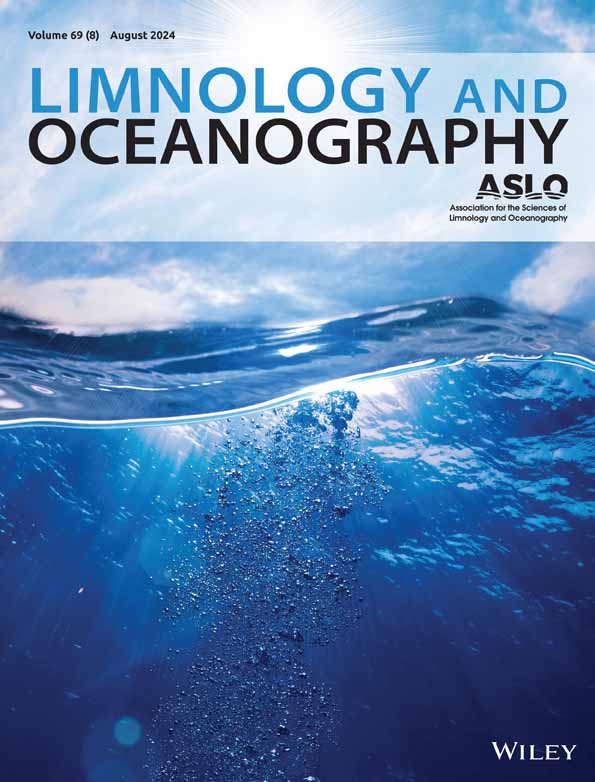Annual dynamics and metagenomics of marine vesicles: One more layer of complexity in the dissolved organic fraction
IF 3.8
1区 地球科学
Q1 LIMNOLOGY
引用次数: 0
Abstract
Despite the role of extracellular vesicles (EVs) in genetic and biogeochemical exchange in the ocean, there is a notable dearth of studies delving into the seasonal annual dynamics of EVs in uncultured microbial communities. Here, quantitative data from the oligotrophic Mediterranean Sea revealed that EVs mL海洋囊泡的年度动态和宏基因组学:溶解有机部分的又一层复杂性
尽管细胞外囊泡(EVs)在海洋遗传和生物地球化学交换中发挥着重要作用,但对于非培养微生物群落中EVs的季节性年度动态研究却明显缺乏。在这里,来自地中海贫营养的定量数据显示,全年EVs mL - 1在104 ~ 106之间,并与微生物丰度相关(相关系数= 0.67)。每个电池的ev比率为1到4。囊泡宏基因组学鉴定出了营养丰富和少营养的原核物种,如黄杆菌和Pelagibacter,在年度数据集中推定主导了含有DNA的ev的产生。微单胞菌和其他乳藻科成为含DNA ev的主要真核生物生产者。在纯化的囊泡中一致地鉴定出属于病毒的基因。在囊泡片段中发现的病毒contigs的相对比例(2.4-30.4%)表明,病毒基因组在ev中的释放可能比以前认为的更普遍。
本文章由计算机程序翻译,如有差异,请以英文原文为准。
求助全文
约1分钟内获得全文
求助全文
来源期刊

Limnology and Oceanography
地学-海洋学
CiteScore
8.80
自引率
6.70%
发文量
254
审稿时长
3 months
期刊介绍:
Limnology and Oceanography (L&O; print ISSN 0024-3590, online ISSN 1939-5590) publishes original articles, including scholarly reviews, about all aspects of limnology and oceanography. The journal''s unifying theme is the understanding of aquatic systems. Submissions are judged on the originality of their data, interpretations, and ideas, and on the degree to which they can be generalized beyond the particular aquatic system examined. Laboratory and modeling studies must demonstrate relevance to field environments; typically this means that they are bolstered by substantial "real-world" data. Few purely theoretical or purely empirical papers are accepted for review.
 求助内容:
求助内容: 应助结果提醒方式:
应助结果提醒方式:


